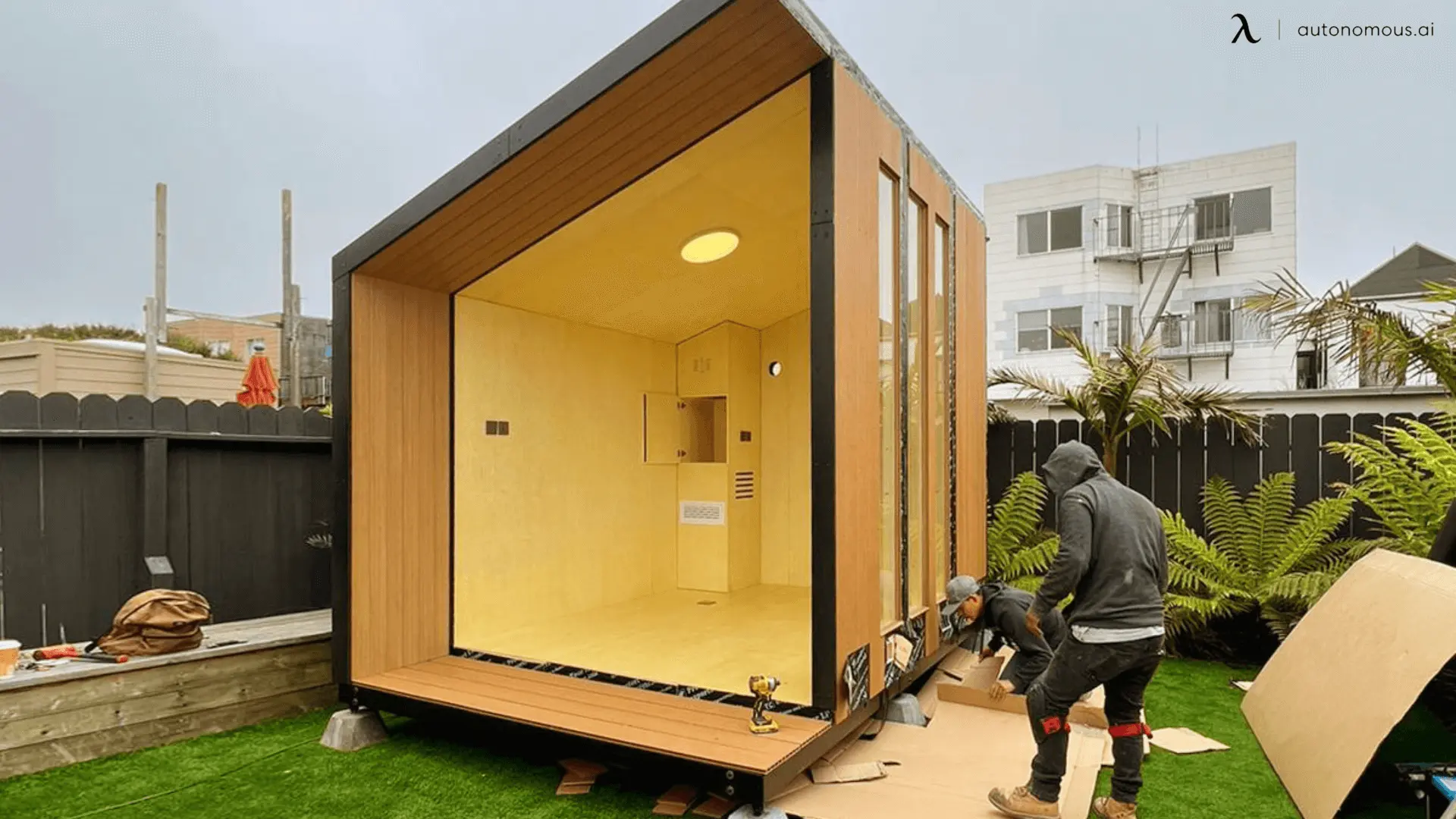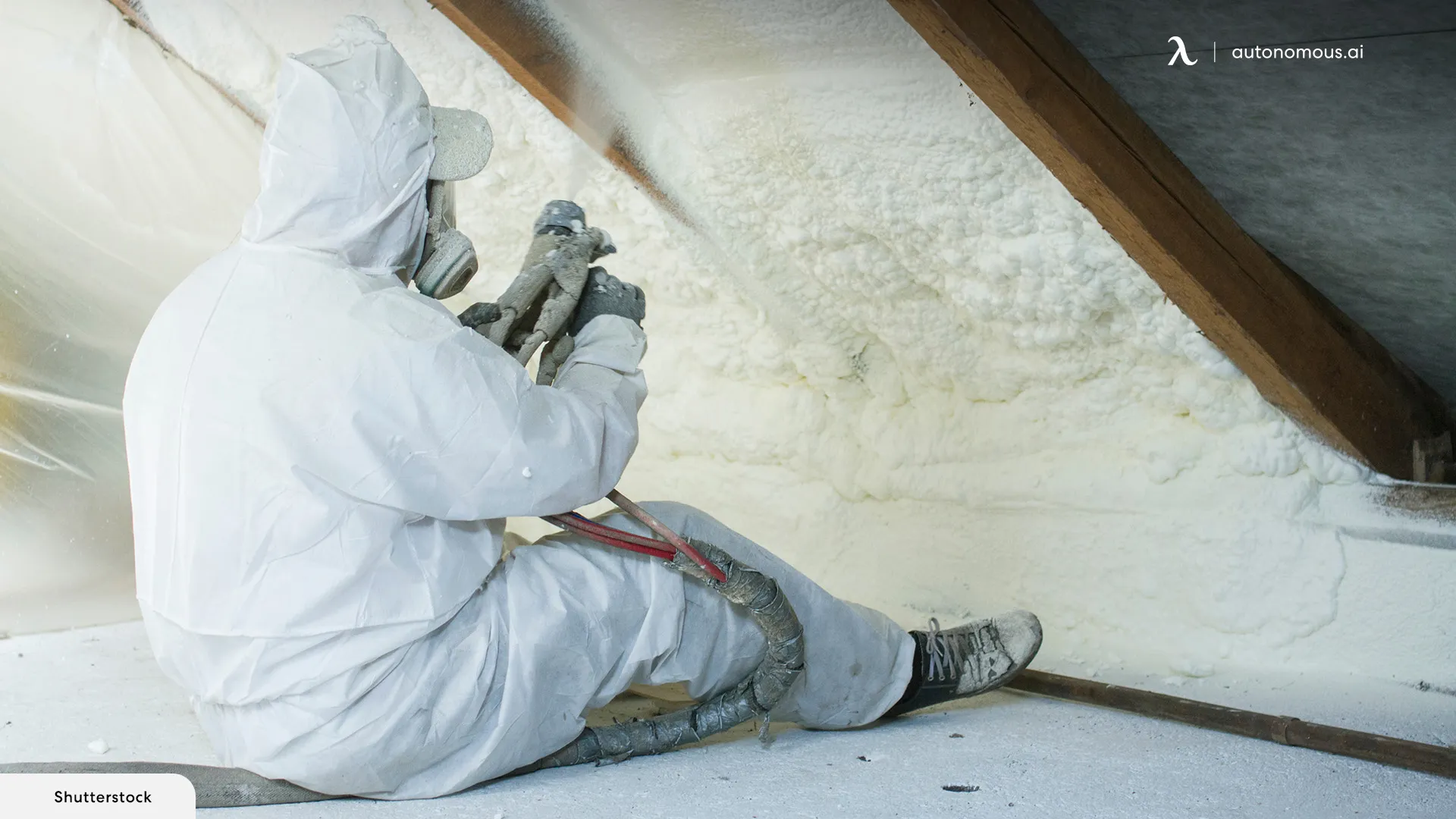
Table of Contents
Insulated garden rooms and sheds have become increasingly popular as versatile, year-round outdoor spaces for work, relaxation, or hobbies. Whether you’re planning to create a cozy insulated garden office shed, a creative backyard art studio, or a comfortable guest room, proper insulation is essential for comfort and energy efficiency. This guide covers everything from choosing insulation materials to understanding the cost of insulated garden rooms and sheds, helping you make informed decisions for your project.
1. Reasons to Insulate Garden Room
When you are building a work-from-home setup, you need to make a few changes to make your home office setup as close as possible to a professional work setting. Only then will you find yourself comfortable enough to work and feel productive. Here are some reasons to insulate the garden shed.
- Minimizing Weather Effect
The most obvious benefit of an insulated garden shed is lessening the effects of the harsh weather on what is within the shed, whether you live in an area with chilly, rainy winters or sweltering, hot summers. Sensitive equipment, electronics, paints, and a wide range of other goods can be harmed by extreme temperatures and humidity. When a shed is properly insulated, the temperatures and humidity are stabilized, and you have a climate-controlled space where you can extend the life of your goods even when they are stored for an extended period.
- Comfortable Environment
Comfort is a crucial part of a productive workplace, and without comfort, you cannot work to deliver your best. This is why offices are made with controlled conditions in more than one way. If your garden office shed is not insulated, you will feel the cold breeze in the winter months and hot scorching heat in the summer months. This will, in turn, bring discomfort; hence your motivation to work will directly be affected.
- Permanent Office Setup
Studies prove that having a proper desk with a dedicated space for work will bring your mind into productive mode as soon as you step in. An insulated garden shed with all the facilities will provide you an all-year-round solution to your home office needs where you will not be moving around with your gadgets throughout the day let alone year.
- Increases the Lifespan of Your Shed
Less moisture means fewer chances for mold, mildew, and pests. An insulated shed is also less prone to corrosion, decay, or material degradation, increasing its lifespan and protecting your investment.
For construction considerations, you might explore options like a slant roof shed or evaluate the best material for outdoor shed. Proper finishing is key too; here’s how to stain a shed to protect and beautify it.
For insulation specifics, spray foam insulation offers excellent moisture resistance and coverage. When choosing between options, consider the differences in a metal vs wood shed. Don’t forget to plan for shed ventilation to maintain a fresh and comfortable interior.
- Additional Utility
Insulating your garden shed not only improves comfort but also expands its potential uses throughout the year. With proper insulation, a larger shed can easily transform into a versatile space tailored to your lifestyle. For instance, it can serve as a fully functional home office shed where you can work without distractions. If creativity is your focus, turning it into a backyard art studio or a backyard music studio provides inspiring environments that support your passions.
For hobbyists, an insulated shed can become a backyard pottery studio or a backyard gym shed, offering dedicated areas to practice and stay active. It can also serve as a cozy backyard man cave or backyard she shed, perfect for relaxation and personal retreat. Additionally, for entertainment lovers, converting the space into a backyard gaming shed provides a comfortable and climate-controlled zone to enjoy your favorite games. These flexible options highlight how insulation plays a crucial role in making your garden room or shed a year-round, multi-purpose extension of your home.
332410da-43f9-4de1-b1dc-2a0edb329a86.jpg)
2. Types of Insulation Materials for Garden Rooms
Type of Insulation | Pros | Cons | Best Use Cases |
Fiberglass Insulation | Affordable, easy to install | Sensitive to moisture | Standard walls and ceilings |
Foam Board Insulation | High R-value, moisture resistant | Requires sealed joints | Tight spaces like floors and walls |
Spray Foam Insulation | Superior sealing and insulation | Higher cost, needs professional install | Small, fully insulated offices and rooms |
Natural & Eco-Friendly Options | Sustainable, moisture regulating | Costly, limited availability | Eco-conscious builds |
- Fiberglass Insulation: Common, cost-effective material that requires dry conditions and protective handling.
- Foam Board Insulation: Rigid panels ideal for compact spaces, offering strong moisture resistance.
- Spray Foam Insulation: Expands to seal gaps, excellent for airtight insulation but more expensive and typically installed by pros.
- Natural & Eco-Friendly Options: Includes sheep’s wool and recycled cotton, offering natural moisture control with environmental benefits.

3. How to Insulate a Garden Room
Step 1: Choose the Right Insulation Material
Start by selecting an insulation material that fits your climate, budget, and usage needs. Popular options include fiberglass batts, foam boards, spray foam, and natural materials like sheep’s wool. For smaller spaces like a 12x8 insulated garden room, foam boards or spray foam often work best due to their high R-value and moisture resistance.
Step 2: Prepare the Walls, Floor, and Ceiling
Before installing insulation, ensure all surfaces are clean, dry, and free of leaks. Moisture can degrade insulation effectiveness and cause mold. Install a vapor barrier on walls and ceilings to prevent dampness from penetrating the insulation.
- Walls: Fit insulation snugly between studs or frame sections. For foam boards, cut panels to size and seal gaps with spray foam or caulk.
- Floor: Use rigid insulation boards under floorboards or concrete slabs. This reduces heat loss through the ground and improves comfort.
- Ceiling: Insulate between joists, especially if the roof isn’t already insulated, to prevent heat escape.
Step 3: Seal Gaps and Joints
A crucial part of insulating your garden room or shed is sealing air leaks. Use expanding spray foam or weatherstripping around windows, doors, and any gaps in the structure. This airtight seal prevents drafts, improves energy efficiency, and keeps the interior temperature stable.
Step 4: Consider Professional Installation for Complex Spaces
If your garden room will serve as an insulated garden office with electrics, or if you’re working with tricky spaces like angled ceilings or unusual shapes, professional insulation installation is recommended. Experts ensure correct placement and sealing, reducing the risk of heat loss and moisture problems.
Step 5: Finish with Interior Cladding
Once insulation is installed, cover it with suitable interior cladding such as drywall, plywood, or tongue-and-groove timber. This protects insulation materials and provides a finished, attractive interior surface.

Additional Tips
- Ventilation: Even insulated rooms need proper ventilation to avoid condensation build-up. Consider installing vents or windows that can open to maintain air quality.
- Windows and Doors: Use double-glazed windows and insulated doors to complement your insulation and reduce heat loss.
- Floor Heating: For maximum comfort in colder months, underfloor heating can be installed beneath insulated floors.
While building an insulated garden shed with electricity involves tasks like installing insulation, running electrical wiring, and choosing energy-efficient appliances, opting for a prefab unit like WorkPod Solar can save time and effort.
Why WorkPod Solar is a Better Option:
- Integrated Insulation: The walls of WorkPod Solar are pre-insulated, ensuring optimal temperature regulation all year round.
- Solar-Powered Electricity: The included solar panels, inverter, and 10.2kWh battery make the unit entirely off-grid, eliminating the need for complex electrical installations often required when running electric to a shed.
- Plug-and-Play Setup: WorkPod Solar arrives pre-assembled and can be installed in your garden within a week, ready for immediate use.
If you’re interested in other powered garden spaces, learn how to build a she shed with electricity or explore the top office sheds with electricity. For those in California, be sure to review the ADU electrical requirements to ensure your installation meets local codes.
4. Cost Breakdown of Insulated Garden Rooms
Understanding the cost of an insulated garden room or shed is essential for budgeting your project accurately. Prices vary based on size, insulation type, materials, and whether you choose a DIY approach or professional installation. Here’s a detailed breakdown to help you plan your investment wisely.
4.1. Typical Price Ranges Based on Size and Insulation Type
Size (sq. ft.) | Insulation Type | Estimated Cost Range (USD) | Description |
Small (up to 100 sq. ft.) | Basic fiberglass batts | $8,000 – $15,000 | Suitable for simple insulated sheds or studios |
Medium (100-150 sq. ft.) | Foam board or spray foam | $15,000 – $30,000 | Ideal for fully insulated garden rooms with better thermal performance |
Large (150+ sq. ft.) | Spray foam or premium eco options | $30,000+ | High-end insulation, often paired with custom finishes and electrics |
4.2. Breakdown of Major Cost Components
Component | Estimated Cost Range (USD) | Notes |
Insulation Materials | $1,000 – $5,000 | Depends on type (fiberglass, foam board, spray foam) and coverage area |
Structural Materials | $5,000 – $15,000 | Wood, metal, or composite framing and cladding |
Labor | $3,000 – $10,000 | Installation of insulation, framing, and finishes |
Utilities Installation | $2,000 – $7,000 | Electrical wiring, lighting, HVAC if included |
Permits & Inspections | $500 – $3,000 | Varies by location, especially in California |
Interior Finishing | $2,000 – $8,000 | Drywall, flooring, paint, and trim |
4.3. DIY vs Professional Installation Costs
Opting to build your own insulated garden room or shed can save on labor costs, often reducing the budget by 20-40%. However, DIY projects require time, skill, and tools, and mistakes can be costly. Professional installation guarantees adherence to building codes and efficient insulation placement, which can save money long-term by improving energy efficiency.
4.5. Additional Costs to Keep in Mind
- Foundation: Concrete slabs or specialized foundations can add $2,000–$6,000 depending on complexity.
- Windows and Doors: High-quality insulated windows and doors improve thermal performance but increase upfront costs.
- Ventilation: Proper ventilation systems, crucial for moisture control, can cost $500–$2,000.
- Furnishing: Office or living furnishings add to the total budget based on your intended use.
Investing in a well-insulated garden room or shed not only improves comfort but can also increase the value and usability of your outdoor space throughout the year. By understanding the detailed cost breakdown of insulated garden rooms and sheds, you can make smarter choices and get the best return on your investment.
Frequently Asked Questions
What insulation materials work best for garden rooms and sheds?
The choice depends on your climate and budget. Spray foam insulation offers excellent air sealing and thermal performance, while foam boards provide moisture resistance and durability. Natural materials like sheep’s wool are eco-friendly options. Proper insulation ensures your garden room remains comfortable year-round, supporting uses like a backyard meditation space or a backyard retreat.
How much does it typically cost to insulate a garden room or shed?
Material costs range from around $1,000 to $5,000 depending on size and insulation type. Professional installation increases expenses but often ensures better performance and longevity. DIY projects can reduce costs but require careful planning and skill to avoid common pitfalls.
Do insulated garden rooms need special permits or approvals?
Permit requirements vary by location, especially for structures with plumbing or electrical systems. In California and similar regions, permits are commonly required for insulated garden rooms or sheds, particularly if they’re used as an office or guest room. It’s best to check local building regulations before you start.
What are some common uses for insulated garden rooms?
Fully insulated garden rooms serve many purposes, including home offices, studios, gyms, or guest spaces. With good insulation, these rooms can also be adapted into relaxing zones such as a garden cinema room or an outdoor sleeping pod, providing comfortable year-round usability.
How long does insulation last, and how should I maintain it?
With proper installation and moisture control, insulation can last for decades. Regularly inspect your garden room for leaks, condensation, or drafts, and maintain ventilation to preserve insulation effectiveness. Seasonal upkeep helps prevent mold growth and material degradation, ensuring a healthy indoor environment.
Can insulation help reduce energy costs in garden rooms?
Yes, effective insulation minimizes heat loss in winter and heat gain in summer, which reduces the need for additional heating or cooling. This energy efficiency can significantly lower operating costs for garden rooms used as offices or living spaces.
How can I make the most of my garden room throughout the seasons?
Incorporating diverse garden room ideas helps ensure your space stays functional and inviting all year long.
What are some relaxing features I can add to my backyard space?
Implementing relaxing backyard ideas such as water features, comfortable seating, and ambient lighting creates a peaceful retreat.
Is it possible to expand my home with garden structures?
Yes, incorporating a backyard room addition is an excellent way to increase living space while enhancing your outdoor area.
Conclusion
Investing in a fully insulated garden room or shed transforms your outdoor space into a comfortable, usable area all year round. Proper insulation not only regulates temperature and reduces energy costs but also creates a quiet, inviting environment suitable for work, hobbies, or relaxation. Understanding the different insulation materials, installation methods, and cost factors is key to planning a successful project. Whether you choose to build your own insulated garden room or opt for a professionally installed insulated garden office shed, prioritizing insulation will maximize your comfort and extend your garden room’s usability throughout every season.
.svg)













